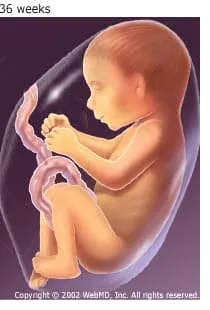Week 35
[MUSIC PLAYING]
JOHN WHYTE: Hello.
I'm Dr. John Whyte, the Chief
Medical Officer for WebMD.
You've probably heard of RSV,
Respiratory Syncytial Virus.
It's been in the news a lot
lately, and you may be wondering
what the big deal is.
For most people, the symptoms
are mild, but it is a highly
contagious virus.
And if you're an older adult
and have
certain underlying
health conditions,
it's important to take
RSV seriously.
With me today is Dr. Morgan
Katz, an infectious disease
specialist from Johns
Hopkins Medicine,
to talk about what RSV is
and how it might affect you.
Dr. Katz, thanks for joining me.
MORGAN KATZ: Thank you so
much for having me.
JOHN WHYTE: Let's start off
with what are the symptoms
of RSV
that people should be aware of?
MORGAN KATZ: So the symptoms
of RSV can really vary depending
on the individual.
In the majority
of healthy children and adults,
RSV is going to cause symptoms
similar to any common cold.
So nasal congestion, some cough,
sore throat, sometimes a fever.
However, in the extremes of age,
so in infants and older adults--
and that is really adults
over the age of 60
with other chronic medical
conditions and really adults
over the age of 75 --you're
going to see more
severe symptoms.
In infants, we can see something
called bronchiolitis, which
is inflammation
of the small airways
of the lung, or pneumonia, which
causes wheezing,
difficulty breathing,
and sometimes needing
respiratory support.
In older adults,
you can see other issues more
like severe pneumonia, fever,
and potentially, what we're
starting to learn, other issues
down the road after
RSV infection
such as cardiac complications.
So this really is a disease that
can have significant impact
on infants, older adults,
and otherwise, you're going
to see, generally, pretty mild
symptoms of a common cold
in healthy kids
and healthy adults.
JOHN WHYTE: How is
RSV different
than other common viruses
like the cold or the flu?
MORGAN KATZ: So that's
a great question, and honestly,
it's pretty hard to tell.
And I think we are starting
to identify and talk about RSV
a little bit more
now in light of the
COVID-19 pandemic.
We're testing ourselves
more often.
We're more eager to diagnose
exactly what's going on.
We have a better understanding
now of how severe RSV can be,
particularly in older adults.
We've understood for a while
that RSV can cause quite
severe disease in infants,
but now we're understanding
a little bit more
that RSV can cause
severe pneumonia,
other complications,
even death in older adults.
JOHN WHYTE: Are there
any special precautions people
should take to avoid getting
or spreading RSV?
MORGAN KATZ: We do now have
new prevention strategies,
vaccines available for RSV.
There are currently three FDA
approved vaccines in the
United States.
It's recommended by the CDC
for all adults over the age
of 75 and adults over the age
of 60
that may be at risk
for severe disease.
We also have-- some
are core infection
prevention practices
that we can use to
prevent transmission
of respiratory viruses.
So things like staying home when
you're sick,
hand hygiene, wearing a mask--
all those things can help
prevent being exposed
to this virus and transmission
of the virus.
Of course, in nursing homes
and congregate living
facilities, transmission
of respiratory viruses
can happen very quickly.
You have to understand that you
have a whole lot
of vulnerable individuals living
in one setting who are generally
dependent on staff, health
care, direct caregivers
to provide direct care,
which can also lead
to transmission of some
of these respiratory viruses.
So we can see
these viruses sweep
through congregate
living facilities
and cause major problems
in this vulnerable population.
JOHN WHYTE: Dr. Katz, thank you
for sharing
this important information
with us.
MORGAN KATZ: Thank you.
Thank you for having me.
[MUSIC PLAYING]
Baby: Your baby's lungs are almost fully developed. It's still building fat deposits beneath its skin to keep warm after it leaves your womb. Your child weighs about as much as a 5-pound bag of potatoes. They won't get much longer, but they will gain weight -- about 0.5 pounds a week. They're practicing breathing movements, too.
Mom-to-be: Your uterus is about 6 inches above your navel. By now, you've probably gained 24-29 pounds. Your doctor will test you for Group B streptococcus bacteria between now and 37 weeks.
Tip of the Week: Are you ready for the baby? Be sure you've collected the necessary baby clothes, equipment -- especially a car seat -- and furniture to get you through the first few weeks, at least, after your baby is born.
Week 36
Baby: Your baby measures about 20.7 inches from head to toe and weighs about 6 pounds. The baby may drop lower in your abdomen, usually assuming the head-down position to prepare for birth. The brain has been developing rapidly, and your baby is practicing blinking. Your baby is developing sleep patterns, and their fingernails have reached the end of the fingers. Your child's skin is pink, and their legs are starting to look chubby.
Mom-to-be: Your uterus has grown bigger these last few weeks and is probably up under your ribs. But you're in the home stretch! After this week, you'll see your doctor weekly. You may switch between fatigue and extra bursts of energy. You may also have an achier back and feel heaviness and discomfort in your buttocks and pelvis. Pressure on your nerves may cause numbness in your fingers, hands, or toes.
Tip of the Week: Start stocking your freezer with foods that can be easily popped into the oven or microwave after you bring your baby home. Chili, casseroles, and other simple dishes can be prepared and frozen ahead of time for use later.
Week 37
Baby: Your baby is about 21 inches from head to toe and weighs almost 6.5 pounds. The baby is getting rounder every day, and skin is getting pinker and losing its wrinkly appearance. Your baby's head is usually positioned down into the pelvis by now. With blood pumping throughout, babies' circulatory systems are complete. Babies' bones and muscles are ready for the outside world. It's harder to move, but your babies keep kicking.
Mom-to-be: Your uterus may stay the same size as it was for the last week or two. Your weight gain should be about as high as it will go, about 25 to 35 pounds. About this time, your doctor might perform a pelvic exam to check on the progress of your pregnancy. You may be peeing more than ever as your uterus reaches its maximum size. You're probably pretty uncomfortable most of the time -- just a few weeks left! If breathing changes make you snore, try using nasal strips.
Tip of the Week: Just in case you deliver early, consider packing two bags for the hospital. Pack one bag for you, with warm socks, a robe, lip balm, and everything you'll want during labor. Pack the other bag with the items you'll want for your newborn.
Week 38
Baby: Most of your baby's downy hair, lanugo, and whitish coating, vernix, are disappearing. Your baby is getting its antibodies from you to protect against illness. The baby's growth is slowing, but fat cells under skin get plumper for life outside the womb. Your baby is almost ready for birth.
Mom-to-be: You're probably not getting any bigger, but you may be feeling more uncomfortable. Make sure you have a bag packed for when you deliver. It won't be long now -- 95% of all babies are born within two weeks of their mother's due date. Your cervix is starting to thin out and open to get ready for labor. You could give birth any time now. Light spotting could mean that your labor is starting. Regular, painful contractions could start at any time. If you're having twins, you've developed more breast tissue than women carrying one baby. Many doctors may recommend delivery at this point with twins if you have not yet gone into labor on your own.
Tip of the Week: You may want to consider whether you'll circumcise your baby if it's a boy. Circumcision isn't as much a medical issue as a cultural or religious one.
Week 39
Baby: Your baby's arm and leg muscles are strong, and toenails and fingernails are in place. Lungs reach full maturity -- ready to breathe and cry. The baby's head has dropped into the mother's pelvis -- a head-down position lets you breathe a little easier. Baby's movements may feel different now that there's less room to move.
Mom-to-be: You're probably feeling quite large and uncomfortable. Your weight gain may slow in these last few weeks. Your uterus has filled your pelvis and most of your abdomen, pushing everything else out of the way. Your center of gravity has shifted, so you may feel clumsier than usual. It's still safe to have sex -- unless your doctor tells you not to.
Tip of the Week: Watch for signs of labor, but don't get too obsessed. It could happen soon or still be a week away. Some differences between false labor and contractions: False labor pains usually concentrate in the lower abdomen and groin, while true labor pains may start in the lower back and may spread through the entire abdomen. Real labor also becomes stronger and more powerful as time passes and will not go away with eating, drinking water, or lying down..
Week 40
Baby: Boys often tend to weigh a little more than girls. More lanugo falls out, but some may remain at birth on the baby's shoulders, folds of skin, and backs of ears. Your baby is ready to eat, cry, breathe, and kick -- and meet you! Babies of both sexes may have little breast buds, which will shrink over time. If your baby is a boy, their testes have fully descended into their scrotum. Your baby is as hefty as a small watermelon: 7.25 pounds.
Mom-to-be: It's almost time! Birth should happen soon now, but don't worry if your due date comes and goes. Only 5% of all babies are born exactly on the predicted due date. It may be more difficult for you to get a good night's sleep, because it's hard to find a comfortable position. Still, try to rest as much as possible, with your feet up if you can. Your uterus has grown from a mere 2 ounces to a total of about 2.5 pounds. If your water breaks, you may feel a sudden trickle or a gush of liquid. Make sure you have some extra help lined up for your first few weeks at home.
Tip of the Week:If you think you're in labor, each small amounts at a time. Be aware that sometimes, even something light in your stomach can cause nausea.
What's Happening Inside You?
Your baby continues to grow and mature. The lungs are nearly fully developed. Your baby's reflexes are coordinated so they can blink, close the eyes, turn the head, grasp firmly, and respond to sounds, light, and touch.

You should still feel movement every day. Your baby's position changes to prepare itself for labor and delivery. The baby drops down in your pelvis, and usually their head is facing down toward the birth canal.


